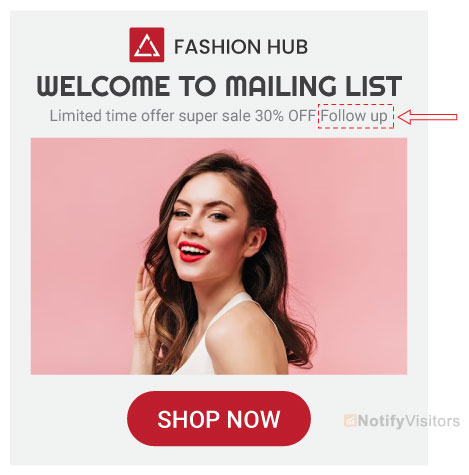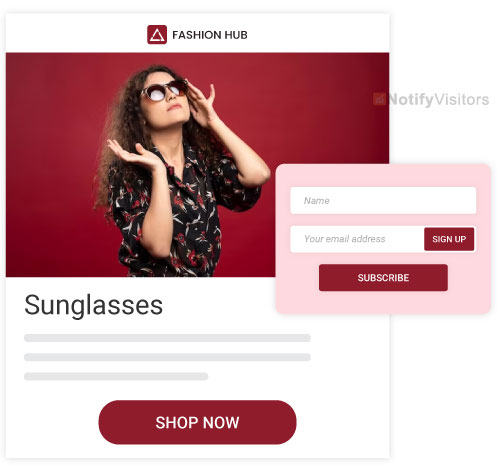After you send your application to an employer, you have to wait for them to review it before you get a response. Consider sending a reminder if it takes more than a week to respond.
By understanding how to respond if you don’t hear from an employer or recruiter about your application, you can showcase your expertise and increase your chances of getting hired.
This article will show you how to write your next email and follow it up professionally, including email templates and examples.
Contents
What is a Follow-up Email?
A follow-up email is a reminder message you can send to the recipient of your previous email if you haven’t heard from them yet. Follow-up emails quickly remind employers or applicants about a previously sent application and confirm your interest and suitability for the position.
You can also send an email after the business call to thank them and provide your professional information and contact information.
Why is Email Follow-up Important?
Understanding the benefits of a quality follow-up email can make it a valuable tool in your job search.
Some of the benefits of email follow-ups include the following:
- It helps you stand out when you partner with someone, whether a new business opportunity or an opportunity to bring in a potential client. It shows that you’re a professional with a reasonable interest in continuing the business relationship.
- It makes others feel valued. When you show appreciation for another person’s time by sending a relevant email, you can help secure follow-up on a job or other activity.
- A follow-up email is an effective channel for communicating openly with someone on the other side of a business relationship. Whether it’s about the status of your job application, cover letter, or something else, you can use a well-crafted email to get the answers you need. Follow-up email informs you.
Components of Follow-up Emails
You can add the following parts to your email:
- Subject line: The subject line is included in the subject column of your email and can inform your email recipient about the subject of your message.
- Opening salutation: It is common for a business email to start with a sincere salutation (e.g., Dear) followed by the name or surname of the email recipient.
- Reminder: The first line of the email should indicate that it is a reminder of your previous email and provide contextual details. It can help the email recipient better understand the purpose of your email.
- Purpose: In the next paragraph, you can restate the purpose of your email, highlighting your skills, abilities, and experience. It can remind the email recipient of your preferences and give them a reason to consider your offer.
- Call to Action: You can end your email with a call to action that clearly states what you want to accomplish with your next email. If it is attached to a job application you send to a recruiter or employer, you can ask about arranging an interview.
- Closing salutation: It is polite to end with a respectful closing salutation. It may include phrases such as “Best regards,” “Best wishes,” or “Thanks for your vote.”
- Name and Contact: Include your full name and phone number after the address so the email recipient can easily contact you.If possible make sure you add your an effective email signature as well.
How to Write Follow-up Emails?
Here are some specific things to consider when creating this email.
1. Add context
Most people open and respond to email the day they receive them. If they answer, you will receive a reply.
They probably forgot about the original message; that is when you finally send them a follow-up email.
Try jogging the recipient’s memory by referring to the original email or contact to improve your chances of getting a response.
2. Avoid using the word “Follow up” in the subject line

Many, if not most, people naturally use the word “Follow-up” in the subject line when composing a polite follow-up email.
There are several reasons why this is a wrong move. First, it provides no value. Second, it makes the reader feel you’re blaming them for not answering. Not a motivator.
Instead of “Following up,” write a subject line that reflects the purpose of your email or previous conversation. It makes you stand out from the crowd.
3. To show the value
Use a follow-up email to show your value. It changes the recipient’s perception of you from someone who likes them to someone who can help them. Usually, it’s worth their time to open and respond to your email.
4. Include a strong CTA

How often have you received a text you weren’t sure how to respond to? Well, you didn’t send anything. Email is no different.
To get a response, structure your follow-up email to make it easy for the recipient to respond. It starts with a short and direct explanation of why you are sending the email and a call to action.
Be clear about what you want from the recipient. Do you want them to call you back, fill out the form or schedule a meeting? Get it right.
It also helps if you limit your response to a single word or short phrase.
5. Follow up quickly
Ultimately, it doesn’t matter how good your email is if it’s late. The general rule of thumb is to send the first follow-up email two to three days after the initial email or contact. That way, your application or your topic is always fresh in their mind.
Also, you may need more than one follow-up email.
Examples & Templates of Email Follow Ups
Template 1: Inquiry follow-up template
It is a type of email that you send to someone via an inquiry form on your website. If they left a phone number, Call them to leave a voicemail in case they have left their phone number.
Subject line: In response to your inquiry
Hey XYZ
Thanks for contacting us. I have left you a voicemail. [Answer their question in brief].
I’m glad to share additional details and answer any questions you have.
Looking forward to connecting with you!
(Name)
Contact information
Template 2: Quote or proposal follow-up
Send this email if you haven’t received a quote or business proposal. You may suggest a demo or share a resource depending on the business model.
Subject line: (Name of your Company) x (Client) follow-up
Hey ABC,
I have not heard from you even after sending the quote, so I thought of checking in.
I have attached it again in case you’ve lost the original one. I will be happy to discuss this with you via phone or email if you have any doubts.
Looking forward to connecting with you!
(Name)
Template 3: Interview follow-up template
It is the most important of the follow-up emails. This email requires it to be very formal.
Subject line: Thank you for your time
Hey ABC,
Thank you for meeting with me today to learn about me and tell me more about (Name of the company) and the (roles and responsibilities).
I loved to hear about (mention something specific).
Using my (experience) to (mention what you would contribute) is compelling, and I look ahead to talking with you again soon.
Let me know if you have any doubts or queries.
Regards
(Name)
Template 4: email follow-up after no response
This email template mentions that you had tried to contact the prospect earlier and want to help them solve their problems. The recipient might have checked your email but did not reply for some reason. It, therefore, becomes essential to follow up on the same.
Hi John,
I had previously sent you an email about (name of the product or service) and how it would be best suited for your company.
Our clients have seen a 15% jump in sales with the help of our given solution. We also offer a 10% discount on the product and free training.
Do get in touch with me for any further details. Looking forward to your valuable response.
(Email Signature)
Template 5: Networking email follow-up
It is very important to build a relationship with your niche. Whenever you want to improve your relationship with the recipient, use networking.
Subject line: It was nice meeting you, (customer name)!
Hi XYZ,
It was a pleasure to meet you last night at (Name of the event). I appreciate and enjoyed our conversation on (topic).
Do have a look at this (resource) for any further information.
Looking forward to connecting with you.
(Name)
Wrapping Up
Whether you’re in the sales department or a freelancer, customer acquisition depends on persistence. That’s why follow-up emails are necessary.
When carefully planned, a follow-up email effectively dispels your potential customers’ doubts and increases their chances of profiting from you.
These examples and templates are useful references for you to write your next email.
Using the tips, you can start making high-response follow-ups and get where you want to be.
For more help on writing such emails, schedule a demo with NotifyVisitors.
Also Read:

























 Email
Email SMS
SMS Whatsapp
Whatsapp Web Push
Web Push App Push
App Push Popups
Popups Channel A/B Testing
Channel A/B Testing  Control groups Analysis
Control groups Analysis Frequency Capping
Frequency Capping Funnel Analysis
Funnel Analysis Cohort Analysis
Cohort Analysis RFM Analysis
RFM Analysis Signup Forms
Signup Forms Surveys
Surveys NPS
NPS Landing pages personalization
Landing pages personalization  Website A/B Testing
Website A/B Testing  PWA/TWA
PWA/TWA Heatmaps
Heatmaps Session Recording
Session Recording Wix
Wix Shopify
Shopify Magento
Magento Woocommerce
Woocommerce eCommerce D2C
eCommerce D2C  Mutual Funds
Mutual Funds Insurance
Insurance Lending
Lending  Recipes
Recipes  Product Updates
Product Updates App Marketplace
App Marketplace Academy
Academy

